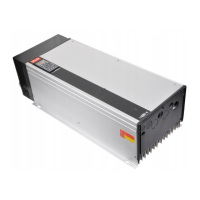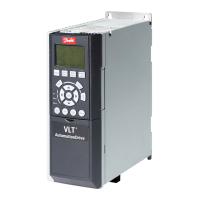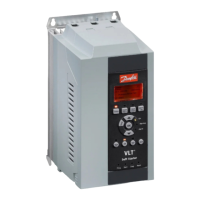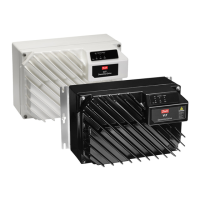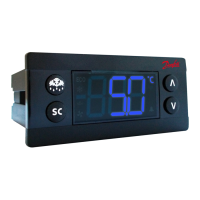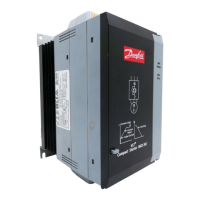VLT
®
2800 Series
All about VLT
2800
■ Special conditions
■ Galvanic Isolation (PELV)
PELV (P rotective Extra Low Voltage) insulation is
achieved b y inserting galvanic isolators between the
control circuits and c ircuits that are connected to
the mains potential. The VLT is designed to meet
the requirements for protective separation by means
of having the necessary creepage and c le arance
distances. These requirements are de scribed in
standard EN 50 1 78. It is also a requirement
that the installation is carried out as described in
local/national regulations regarding PELV.
All control terminals, terminals for serial communicat ion
and rela y terminals are safely separated from the
mains potential, i.e. they comply with the PELV
requ irements. Circuits that are connected to control
terminals 12, 18, 19, 20, 27, 29, 33, 42, 46, 50,
53, 55 and 60 are galvanically connected to one
another. Serial communication connected to fieldbus
is galvanically insulated from the control terminals,
although this is only a functional insulation.
The relay contacts on terminals 1 - 3 are insulated
from the other control circuits with reinforced/double
isolation, i.e. PELV is observed for these, even though
there is mains potential at the relay terminals.
The circuit elements described below form the safe
electric separation. They fulfill the requirements
for reinforced/double insulation and as soc
iated
testing pursuant to EN 50 178.
1. T ransformer and optical separation in
voltage supply.
2. O p t ical insulation between Basic M otor
Control and control c ard.
3. Insulation between the control card and
the pow er part.
4. Relay contacts and terminals relating to other
circuits on the control card.
PELV insulation of the control card is g
uaranteed
under the following c onditions:
- TT network with maximum 300 Vrms
between phase and earth.
- TN network with maximum 300 Vrms
between phase and earth.
- IT network with maximum 400 Vrms
between phase and earth.
In order to maintain PELV all connec tions made to
the control terminals must b e P
ELV, e.g. thermistor
must be reinforced/double insulated.
■ Earth leakage current and RCD relays
Earth leakage current is primarily caused by the
parasitic capacitance between motor phases and
motor cable screen. W hen an RFI filter is used, this
contributes addition al leakage current, a s the filter
circuit is connected to earth through capacitors.
The size of the earth leakage current depends on
the following factors, in order of priority:
1. Length of the motor cable
2. Motor cable with/without screen
3. High switching frequency
4.RFIfilterusedornot
5. Motor earthed on site or not
The leakage current is of importance to safety during
handling/operation of the frequency converter if (by
mistake) the frequency converter has not been earthed.
NB!:
Since the leakage current is > 3.5 mA ,
reinforced e arthing must be established, as this
is required to ensure compliance with EN 50178.
The cable cross section must be a t least 10 mm
2
or
2 rated earth wires that are terminated seperately.
NB!:
Never use RCD relays (type A) that are
not suitable for DC fault currents from
3-phase recti fier loads.
If RCD relays a re used, they must be:
- Suitable for protecting equipment with a DC content
in the faulty current (3-phase bridge rect ifier)
- Suitable for a pulse-shaped, brief discharge
on power-up
- Suitable for a high leakage current (300 mA)
See the section entitled Earth connection
for further informat ion.
■ Extreme operating conditions
Short circuit
The frequency converter is protected against short
circuits on motor terminals U, V, W (96, 97, 98).
A short circuit betwee n two m otor terminals would
lead to an overcurrent in the IGBT module, which
meansthatalltransistorsintheIGBTmodule
would independently cut out.
The inverter turns off after 5-10 µs and the frequency
converter displays a fault code, although this depends
on impedance and motor frequency.
MG.28.E9.02 - VLT is a registered Danfoss trademark
131

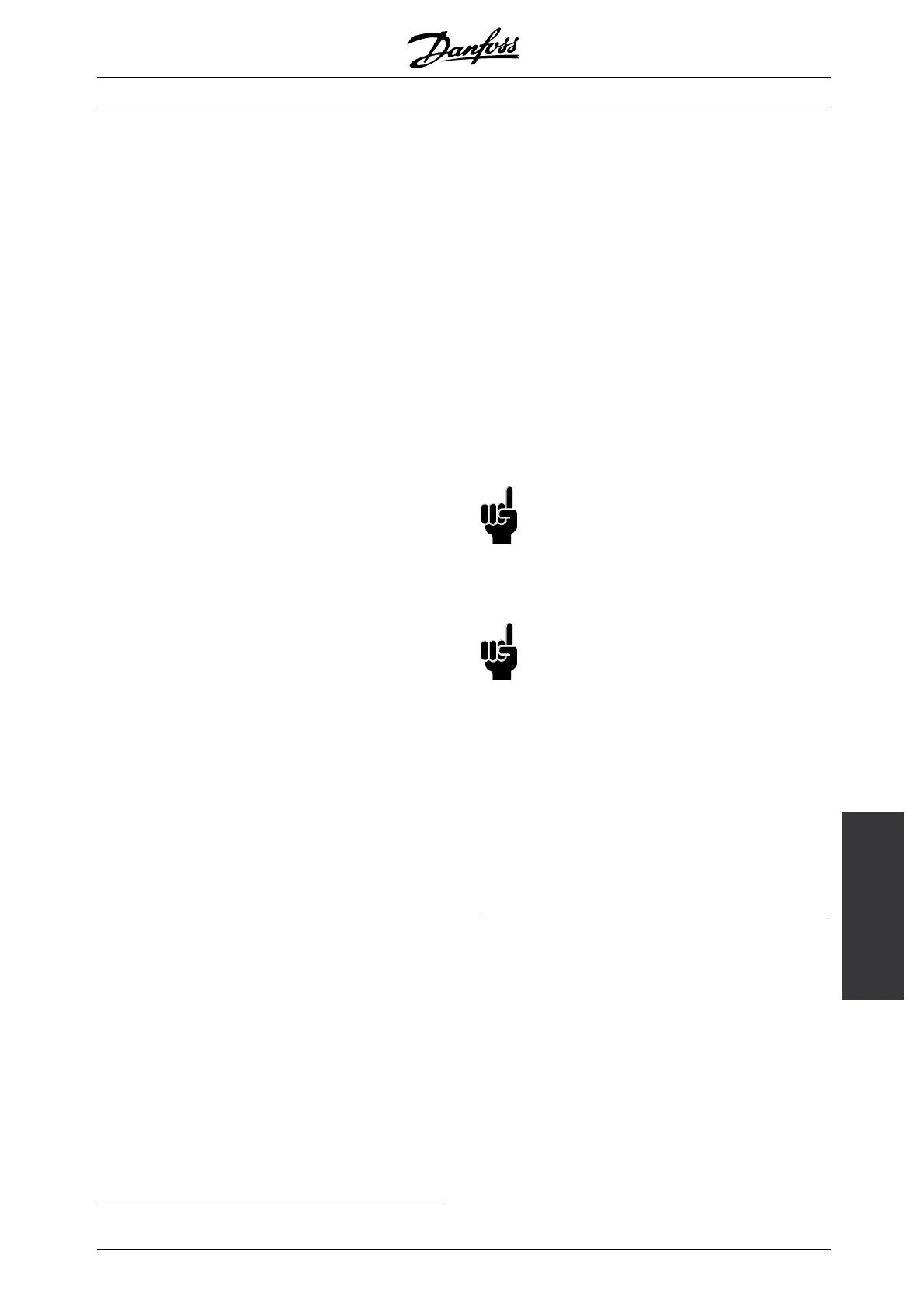